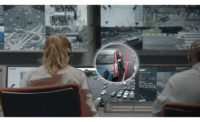The I-Team of New York’s NBC Channel 4 put together a four-part investigative series in which they sent surveys to more than 500 convicted burglars and interviewed many of them.
The surveys asked about how the burglars chose their targets, their methods of breaking into homes and what residents can do to stop them. Because the burglars were convicted and already in prison, many were surprisingly candid about their methods, revealing many secrets, tricks and tactics.
The first part of the series reveals the burglars’ methods and rationale for choosing their targets. Some key findings were not surprising, such as the fact that burglars prefer houses to apartments, but other findings seem to go against conventional wisdom. For instance, 61 percent of those who responded said they preferred to break in during the morning hours.
Many burglars surveyed the houses they planned to break in to, often by posing as door-to-door salespeople or someone passing out religious literature. In fact, 29 percent said they knocked on doors before breaking in, and if someone answered, they had lies ready to explain why they were knocking. One went so far as to carry a leash so he could claim he was looking for his lost dog.
While only 10 percent of surveyed burglars are using social media to scope out potential victims, many of the younger burglars are using it more and more frequently.
Another surprising fact was that 37 percent said they would break in to houses even if they heard a dog barking, one burglar stating that “Dollar store Beggin’ Strips work wonders.”
Part 2 discusses the most effective methods of discouraging break-ins. The top answers burglars gave for how they entered a home were unlocked windows, unlocked doors and kicked-in doors. When asked about alarm systems, many replied they would not be deterred by an alarm because they were too fast for police, they could disarm it or they could break in without setting it off.
While some of the burglars said window stickers made a home a target, Peter Goldring, CEO of ADR Security explained to viewers that statistics prove otherwise. Goldring said alarm and surveillance systems monitored by actual people work — despite what the burglars say. Goldring also maintained that historical data shows that houses with yard signs and window stickers from alarm companies are less likely to be burglarized.
Interestingly, although many burglars seemed unconcerned with alarms, more than a third reported they would not break in to a house if a security camera was near a door or entryway. However, 44 percent said they would still break in.
Part 3 of the series discusses the best thing for homeowners to do when they find a burglar in their house. The burglars’ advice was to not confront them, but to hide and call 911. Of those surveyed, 77 percent said they would leave immediately if they found someone inside.
In Part 4, the I-Team discusses a particular question on the surveys: “What advice would you give your mom to protect her home and prevent break-ins?”
One tip was to keep shrubs and bushes trimmed low in order to avoid creating hiding places. Another suggested having a radio on at all times so burglars wouldn’t know who was inside. Of particular importance to alarm dealers, one burglar advised homeowners “Don’t try to save money by not alarming the second floor.”
Another burglar said he would advise his mom to “get the latest electronics that allow monitoring [and that] notify of anyone who rings the doorbell on your cellphone and allows you to communicate via speaker through your cellphone.”
Goldring agreed that the modern security technology that allows security surveillance footage to be Web enabled and even be fed directly to police can serve as an effective deterrent.
To see the investigation and watch all four parts of the series, click here.




